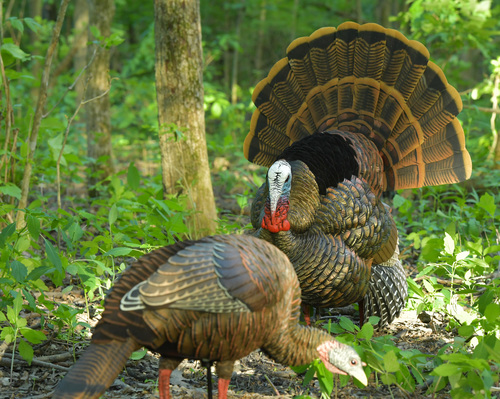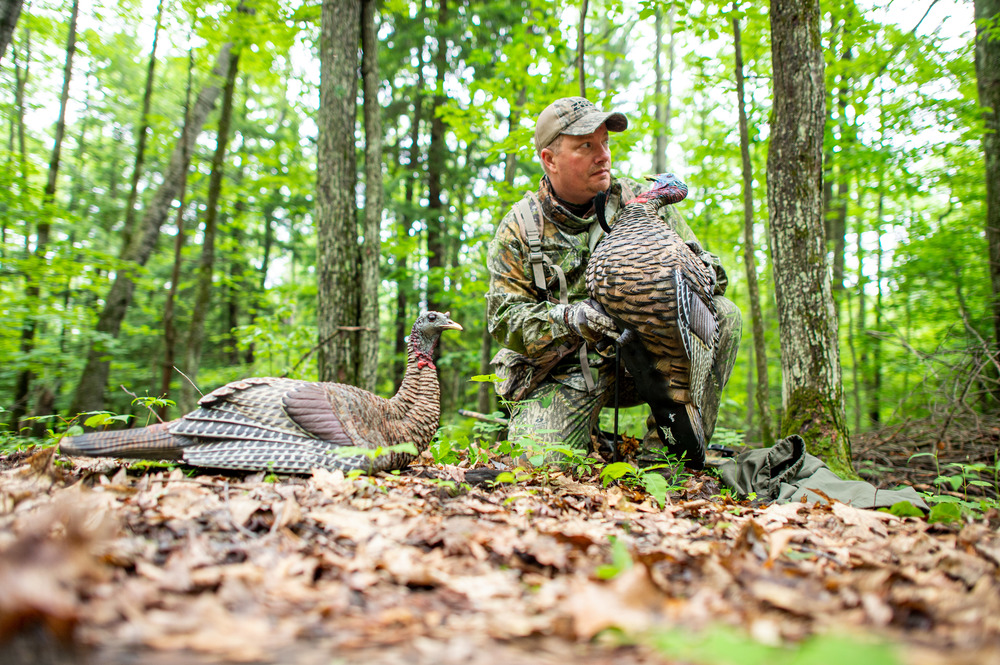I have been hunting turkeys for 20 years now and I still have a lot to learn, but one thing I do know for sure is that turkey decoys have become a vital part of my turkey hunting success! No, you do not have to use a decoy to harvest a wild turkey, but I love to draw turkeys in close, see how they interact with the decoy and enjoy the show. The Avian X series of turkey decoys will do just that for you. I have been using Avians for the past several seasons and my harvest rate has taken a significant increase from where it was. There are many different types of decoy setups a hunter can use. Here are our 3 BEST Avian X decoy setups to help you be successful this spring!
1. Full Strut Tom/Laydown Hen Combo
This setup seems to be the most controversial of the three. Some hunters live & die by this setup and others are not fans of the full strut decoy, but if used properly and in the right situations, this is one of my favorite ways to hunt! The LCD or HDR Strutter decoy are both eye-catching and when used in open field settings can be seen from long distances. This scenario is perfect when you have observed aggressive gobbler behavior the in flock of turkeys you are hunting. Paired with the LCD Laydown Hen from Avian, this is a deadly combination. This breeding position is sure to trigger boss toms to come into the decoys for an action-packed hunt at close range.

2. Submissive Jake
If you are hesitant to put out a strutter decoy, then try a submissive jake setup. the LCD Quarter Strut Jake makes this setup attractive to both dominant and sub-dominant gobblers. This decoy option is 15 percent smaller than a real jake. When I pair it with any of the Avian X Hen decoys, it has proven time & time again to drive gobblers wild! This option is less risky if you are worried about spooking subordinate gobblers and running them off your property. I have found this option is most successful during the early part of season when turkeys are still establishing dominance & their pecking order!

3. Lone Hen
If I had to choose one setup to use for the rest of my hunting days, this would be it! I cannot tell you how many times I have pulled toms into range with this option. I am a conservative turkey hunter and if you want to use a decoy but are worried that a male decoy could do more harm than good, you can never go wrong with a lone feeding hen. Avian has both the LCD & HDR series versions of a feeding hen. A gobbling tom will come from hundreds of yards away to try and catch this lone hen’s attention. This feeding posture makes the hen look calm and content, which is always inviting to other turkeys. On many of my hunts, I have started with a lone feeding hen and ended up with a field full of turkeys in my lap. You can never go wrong with this one and it gets my best overall decoy setup!
Avian X has a great line of the most realistic turkey decoys on the market. Check them out today at avian-x.com!







































![Air gun 101: The differences between .177 & .22 – Which jobs they do best ? [Infographic]](https://airgunmaniac.b-cdn.net/wp-content/uploads/2024/11/1773-150x150.jpeg)
